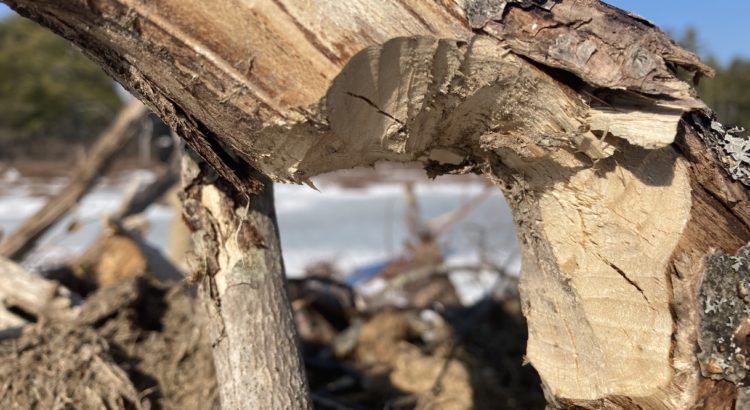There are only two New Hampshire animals that make significant changes to their environments: humans and beavers. Beavers are skilled engineers, creating a habitat for themselves where previously there was none.
As aquatic animals, beavers spend most of their time in the water. They are proficient swimmers, and can remain underwater for up to 15 minutes at a time. Beavers’ skills in the water make up for their relative clumsiness on land, and helps to keep them safe from the threat of predation.
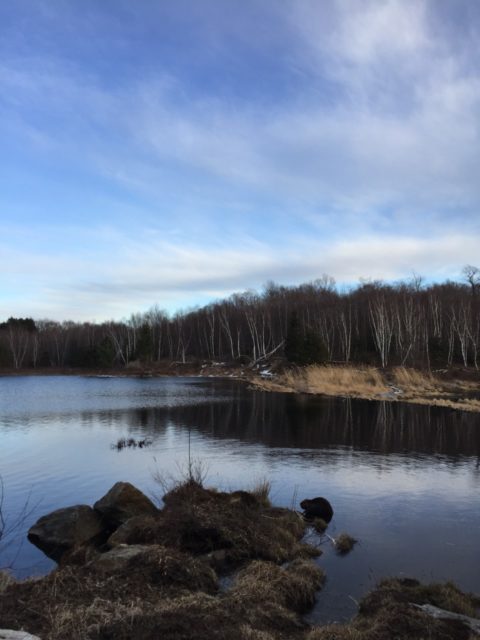
What makes beavers unique is that they change their environment in order to have a better ecosystem–which, to a beaver, means a damper ecosystem. Beavers will build dams along streams out of wood, mud, and branches, creating shallow ponds on what was flat, dry land.
Beavers are herbivores, meaning they only eat plants. Specifically, they enjoy eating the bark and cambium (the layer of living cells underneath the bark) of several types of trees. Around New Hampshire, they prefer to eat aspen, maple, and birch. There are some trees that beavers don’t like to eat: specifically, hemlocks and other coniferous trees like pines. Beavers will actually girdle hemlock trees around their pond, tearing off the bark all around the tree, killing it, without actually consuming any of the tree. By doing this, the beaver will kill the trees that it does not like to eat, promoting the growth of other trees that it prefers.
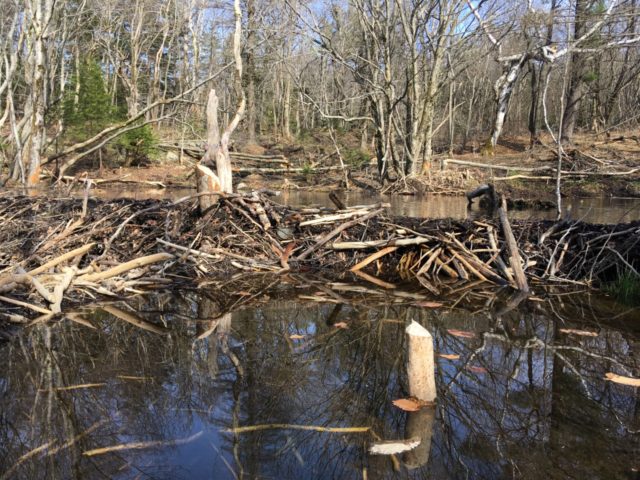
There are a lot of ways you can tell that a pond was created by a beaver. First, and most obvious, is the presence of a dam. An active beaver dam will keep the water on the pond side at the height of the top of the dam. Every evening when beavers wake up (beavers are nocturnal), they will begin their activities by listening for water leaks, and patching any holes with mud dug from the bottom of the pond. This means an active beaver dam will hold water very well, while an abandoned beaver dam will quickly develop leaks and the ecosystem will slowly revert back.
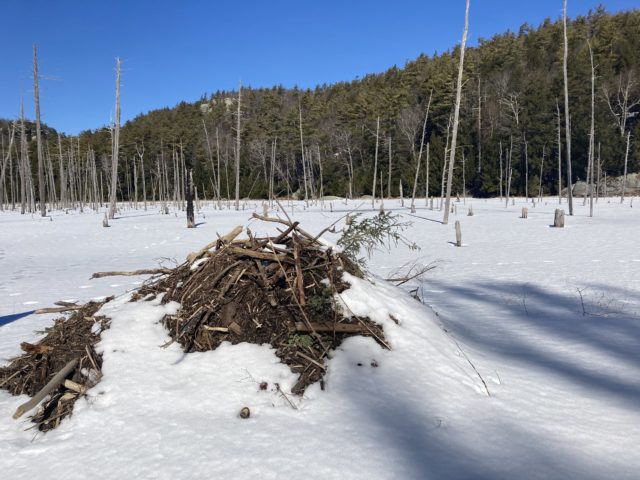
Another great identifier for beaver ponds is a large amount of snags (standing dead trees) in the water. When a beaver dam floods, covering formerly dry land, the trees that were alive and standing become submerged in water. This kills the trees, and the snags stay standing for a lot longer than they would on dry land because of the water protecting the root system.
You can also tell you are at a beaver pond is by beaver markings on trees. Many trees are felled around the perimeter of the pond, and you can see characteristic bite marks in the wood. If you wander around a beaver pond, you will likely see many trees in different stages of being eaten or cut down.
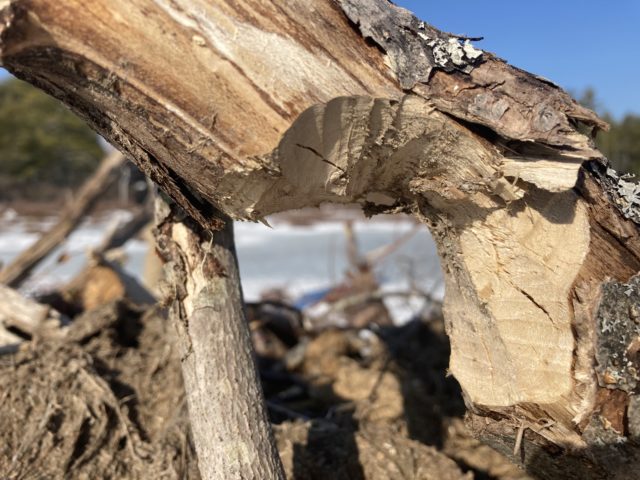
Beaver ponds are a very unique and important environment for New Hampshire. They provide a habitat for many types of creatures including migratory birds, amphibians, fish, and obviously beavers. Next time you go out in the woods, keep an eye out for beaver ponds!
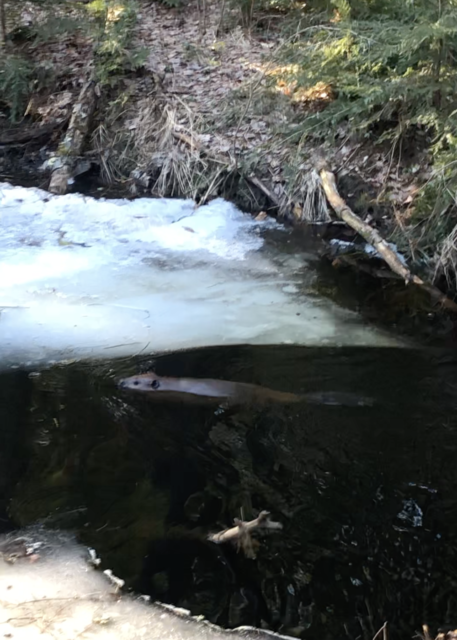
Beavers are most active at dawn and dusk. They can often be found around sunset in Bear Brook State Park underneath the bridge on the road to Beaver Pond Campground, so keep your eyes peeled! A full scale beaver pond can be found near Hall Mountain in Bear Brook State Park. You can get to it by following the directions to get to the Lost Shelter.

